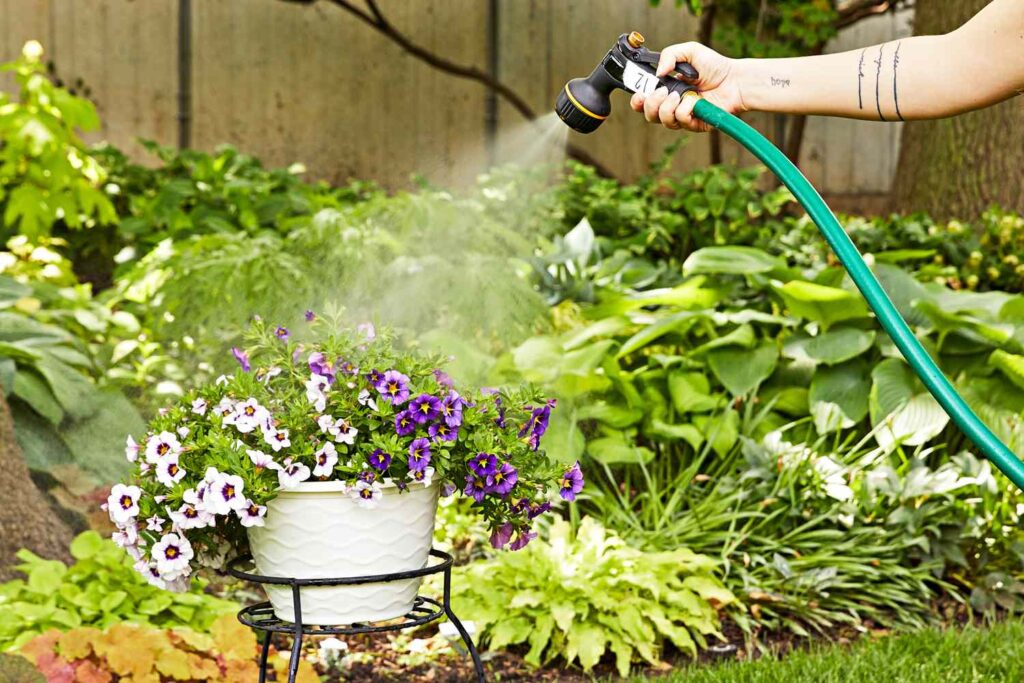Dealing with a garden hose that constantly kinks or tangles can be incredibly frustrating. You’re ready to water your lawn or clean your patio, but instead, you’re left wrestling with a twisted hose that blocks water flow. Besides the time wasting, frequent kinking can also damage your hose over time. You can keep your garden hose kink-free and easy to use with a few simple tips.
1. Proper Hose Storage
Improper storage is one cause of hose kinks and tangles. Plopping up or laying out your hose in the yard allows it to form tight bends, which can eventually harden into permanent kinks.
Always coil your hose loosely, with loops at least 18 inches in diameter. Tight coils are more likely to create bends that lead to kinks, whereas loose coils allow the hose to maintain its shape and flexibility.
Consider using hose reels, hangers, or baskets for proper storage, or invest in a retractable garden hose to help easily keep your hose away. Reels and retractable hose systems ensure your garden stays tidy and your hose remains kink-free.
2. Use a Hose Reel or Cart
A hose reel can be one of the most convenient ways to store and prevent kinks. Reels help wind and unwind the hose smoothly, preventing tangles while keeping your garden neat and organized.
A hose reel allows for controlled retraction, so the hose is neatly stored without twists or folds. This is especially helpful for longer hoses more prone to tangling when coiled manually. A retractable garden hose is an even better option, offering automatic retraction and saving time and effort.
3. Choose a Kink-Resistant Hose
Not all garden hoses are created equal; some are far more prone to kinking and tangling than others. If your current hose regularly kinks, it might be time to invest in a better, kink-resistant model.
Hoses made from thin plastic, or single-layer materials are more likely to kink. In contrast, kink-resistant hoses are typically made from reinforced rubber or vinyl, which are more flexible and durable.
When shopping for a new hose, look for one labeled “kink-resistant.” These hoses often feature multiple layers of material or reinforced mesh that help them maintain their shape and prevent kinks.
4. Lay Out the Hose Fully Before Use
One of the simplest ways to avoid kinks and tangles is to fully lay out the hose before you use it. Many people pull the hose straight from the coil and begin using it without unrolling it completely, which creates tension and twists that lead to kinks.
When you lay out the hose fully before turning on the water, it can relax into its natural shape, preventing sharp bends or twists from forming.
Step-by-Step Guide:
- Uncoil the hose completely and stretch it out along the ground.
- Check for any kinks or twists and straighten them before turning on the water.
- Once the hose is fully laid out, attach your nozzle and start watering.
Tip: If the hose has been stored in tight coils for an extended period, lay it in the sun for 15–20 minutes before using it. The warmth will soften the material and make it easier to stretch out.
5. Use Hose Guides and Quick Connectors
Hose guides are small but effective tools for preventing kinks, especially when dragging the hose around corners or over garden beds. These guides help direct the hose smoothly and prevent sharp bends or tangles as you move around the yard.
Quick connectors make it easy to attach and detach the hose from different nozzles or sprinklers without twisting or tangling it. By making connections faster and more streamlined, these connectors help reduce the risk of creating accidental kinks.
Conclusion
A kinked or tangled hose is more than just an inconvenience, it can also reduce water flow and shorten the lifespan of your hose. However, following these simple strategies can prevent these common problems. With a retractable garden hose reel or a manual reel system in place, your garden hose will stay tangle–free, easy to use, and last much longer, allowing you to focus on your gardening tasks instead of hose wrestling.



